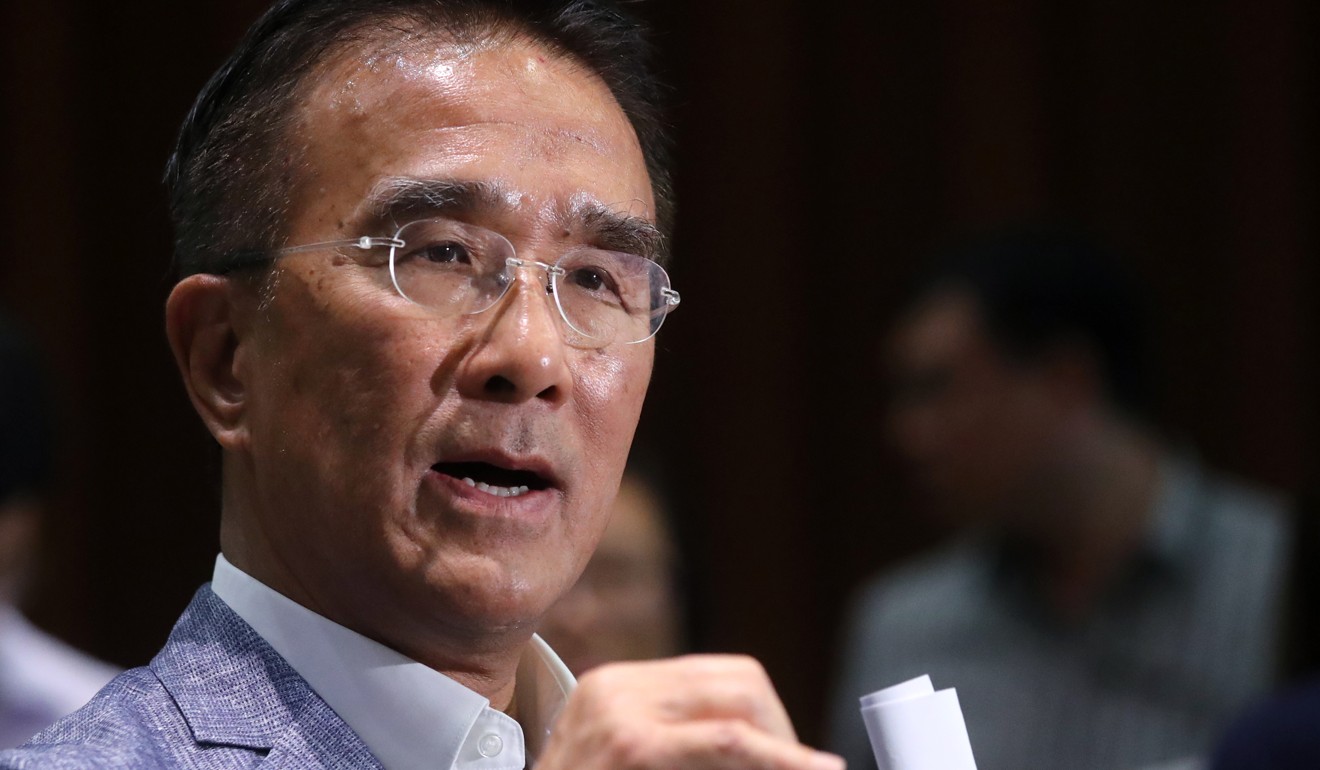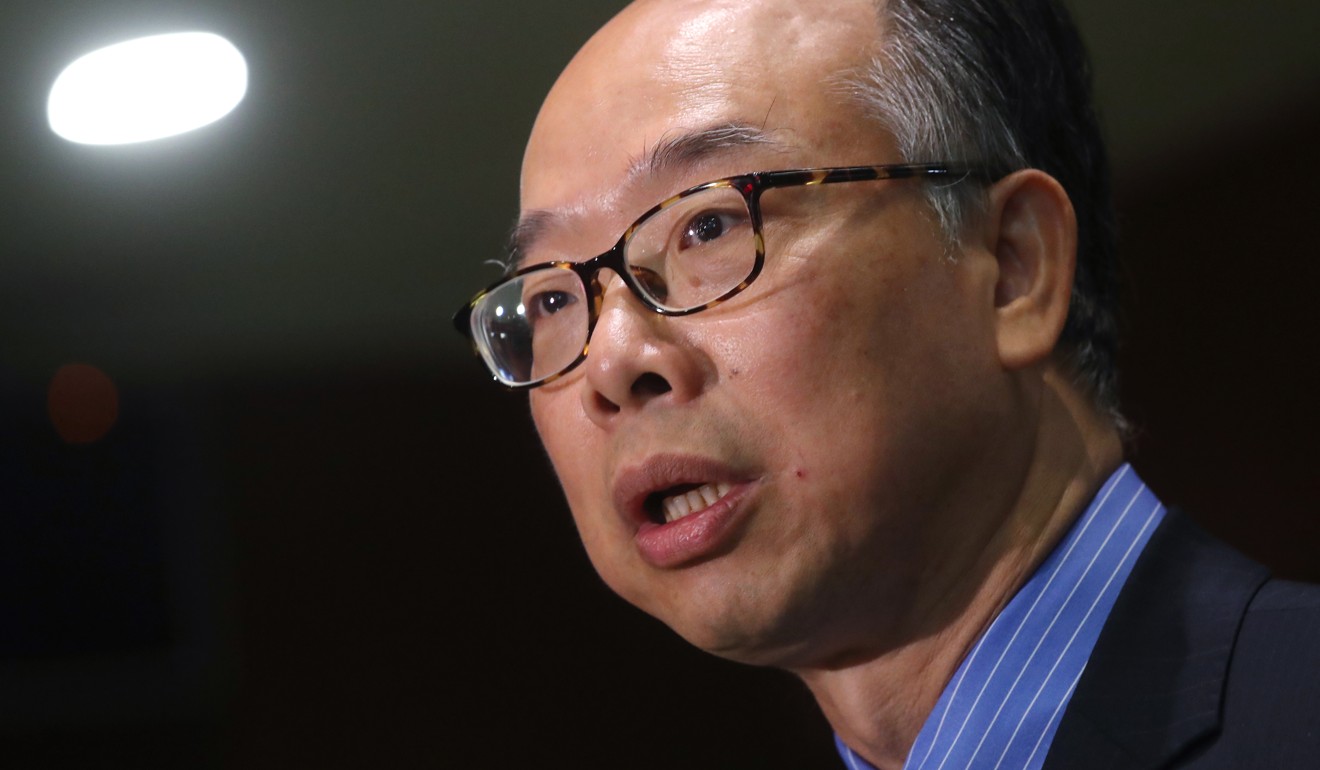
Corner-cutting on Hong Kong's Sha-Tin-Central rail link much more widespread than MTR admits, sub-contractor chief says
Director of company involved in building work backs calls for Hung Hom platforms to be dug up to find out just how many steel bars were improperly trimmed

A construction boss directly involved in work on Hong Kong’s scandal-hit rail line has backed suggestions that shoddy work on the multibillion-dollar project could be far more widespread than already admitted.
Jason Poon Chuk-Hung, director of the subcontractor China Technology Corporation, also called for parts of the platforms at the Hum Hom station of the Sha Tin-Central link to be torn up for inspection, and claimed he tried to raise the alarm after personally witnessing corner-cutting.
Controversy arose last month as the MTR Corporation confirmed that on five occasions in late 2015 some steel bars were trimmed to look like they had been screwed properly into couplers on the platforms, when they had not. The police have opened an investigation at the request of the Highways Department, and the MTR Corp has handed documents on the build to law enforcement agencies. The government has also launched a judge-led inquiry into the furore.
On Wednesday lawmaker and former rail boss Michael Tien Puk-sun even called for part of the platforms to be ripped up to check for shoddy work. He had earlier claimed that a source told him 5,000 bars were faulty, instead of fewer than 25, as asserted by MTR Corp projects director Philco Wong Nai-keung.

Poon backed the call for a check, but his estimate of the number of faulty bars was more conservative.
“To me, it’s a bit too many if you say 5,000 steel bars were defective,” he told a radio programme. “I don’t want to make wild guesses. But it must be way over what the MTR’s projects director claimed … It seems to me the number of faulty steel bars is more than 1,000.”
Leighton Contractors (Asia), the main group in charge of building the Hung Hom station platforms for the city’s costliest rail project – at HK$97.1 billion – outsourced the concreting work to Poon’s China Technology, and the steel bar work to Fang Sheung Construction.
After calling for a sample check on the site, Poon said he was first alerted to the problem by his workers in July 2015. He said he informed frontline MTR staff, who immediately asked the Leighton workers to stop the work.
He said that two months later he saw workers in Leighton uniforms and helmets using high-speed hydraulic cutters to trim the steel bars, under the watch of Leighton superintendents.

“In September 2015, I was told that the bar-cutting work had become more serious and large-scale as the workers switched from normal steel cutters to using high-speed hydraulic cutters to cut the steel bars in a hidden zone,” he said.
He said he immediately pointed out the problems to the two Leighton superintendents but they dismissed it as nothing improper. He said he took photos and videos of the alleged malpractice.
In a later meeting with Leighton management in September 2017, Poon alleged that he was forced to delete the videos on his phone, and afterwards he lost his remaining contract with MTR, worth about HK$70 million.
In the MTR Corp’s initial report on the scandal, Leighton denied it had any direct knowledge of the shoddy work. It also signed certifications that work on the station was all above board.
Poon said he feared structural problems in the platform would surface 20 years or 30 years later, as faulty steel work could easily cause cracks and water leakage, resulting in rusty steel bars.
He criticised the MTR Corp for changing its version of events, questioning why it was particularly mild to Leighton. Leighton is an MTR Corp partner in other major ventures.
“In January 2017, Leighton forwarded my email complaint to the MTR Corp. At that time MTR was already aware of these construction problems. As a responsible rail supervision organisation, it had a duty to investigate the whole thing,” he said.
Democratic Party legislator James To Kun-sun urged the police to get in touch with Poon to retrieve his phone and the pictures he said he took. Poon could also demand witness protection, he said.

Tien said he was disappointed that transport chief Frank Chan Fan had refused to break open parts of the platform for inspection. Chan said earlier that Tien’s proposal was “without any scientific justification”.
“We’re now at a dead end,” Tien said. “They will only break open the concrete with [complete] evidence, but you will only have [complete] evidence if you break the concrete open.”
In response to the Post’s enquiries, MTR Corp said it would cooperate with the inquiry and law enforcement agencies in their work. The rail giant said it handled all contractors fairly and according to the law.
“We handle all contracts in strict accordance with law and contractual terms so as to ensure the quality of construction work, and we deal with all contractors on this same basis,” it said.
Additional reporting by Sum Lok-kei